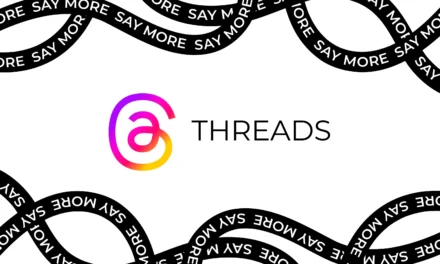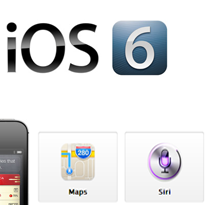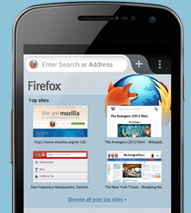For years, in-app advertising has been the cornerstone of revenue for countless mobile applications, particularly free-to-download ones. However, as we navigate mid-2025, a significant shift is underway. App developers and publishers are increasingly looking beyond traditional ad placements to unlock sustainable, higher-value revenue streams. The billion-dollar question is no longer if to diversify, but how.
The answer lies in a fascinating evolution of monetization strategies: innovative subscription models, sophisticated hybrid approaches, and a growing emphasis on direct-to-consumer (DTC) engagement. This move is driven by user fatigue with intrusive ads, tightening privacy regulations, and the increasing demand for personalized, value-driven experiences.
The Resurgence of Subscription Models
Subscriptions have seen a remarkable resurgence, evolving far beyond simple monthly access fees. In 2025, subscription apps are projected to hit a staggering $1.26 trillion in revenue, highlighting their immense potential. However, the landscape isn’t without its challenges, with nearly 30% of annual subscriptions facing cancellation within the first month. This “subscription fatigue” is pushing innovation.
Developers are now implementing smarter, more flexible subscription tiers. We’re seeing:
- Tiered Pricing: Offering different levels of access at varying price points (e.g., basic, premium, pro) to cater to diverse user needs and budgets.
- Credit-Based Systems: Especially popular with AI-powered applications, where users purchase credits that can be spent on specific features or computations. This offers flexibility and a direct correlation between usage and cost.
- Dynamic and Personalized Paywalls: Leveraging AI and user behavior data to determine the optimal moment and offering to present a subscription proposition, increasing conversion rates.
- Geographic and Demographic Pricing: Introducing student discounts or region-specific pricing to broaden accessibility and appeal, as seen with some micro-subscriptions for niche features.
A significant development in May 2025 was a U.S. federal judge’s ruling requiring Apple to allow developers to direct users to external payment options, potentially reducing app store commissions. While Apple is appealing, this news has prompted platforms like Stripe to quickly support off-platform checkout for iOS, signaling a potential shift in economic models for subscription apps. This move could empower developers to recapture margins and reinvest in acquisition or retention.
The Power of Hybrid Monetization Strategies
While subscriptions are booming, the most successful apps in 2025 are rarely relying on a single revenue stream. Data from RevenueCat’s 2025 industry report indicates that over 35% of top-performing apps now rely on hybrid monetization models. This approach blends various strategies to diversify income and appeal to a wider user base.
Common hybrid combinations include:
- Freemium + In-App Purchases (IAP) + Subscriptions: Offering a free basic version, selling virtual goods or premium features via IAP, and providing advanced functionality through a subscription. Mobile games, productivity tools, and entertainment apps are masterfully employing this. The IAP market alone is expected to reach $257.23 billion by the end of 2025, driven by gaming and AR integration.
- Subscription + Rewarded Ads: Providing an ad-free premium experience, but also offering free users the option to watch a rewarded video ad to unlock specific content, extra lives, or temporary features. This creates a mutually beneficial exchange, enhancing user experience while still generating ad revenue.
- Sponsorships & Partnerships: Integrating branded content or sponsored sections that align with the app’s niche. A fitness app, for example, might partner with a sportswear brand for exclusive discounts or content. This provides direct revenue while enhancing the user experience with relevant offers.
This flexible approach allows apps to attract a large user base with free offerings, then convert them to paying customers through incremental value additions, rather than an upfront commitment.
Embracing Direct-to-Consumer (DTC) Approaches
Moving beyond traditional app store ecosystems, more apps are adopting DTC approaches that foster direct relationships with their users and explore alternative revenue channels. This shift is partly influenced by rising acquisition costs and tightening platform controls.
Key DTC-inspired strategies include:
- Data Licensing (Ethical): With proper user consent and transparent practices, apps collecting valuable anonymized user data (e.g., market trends, user behavior insights) can license this to research firms or advertisers. This requires strict adherence to privacy regulations like GDPR and CCPA.
- Email & SMS Marketing: Building direct communication channels to nurture user relationships, offer personalized promotions, and drive conversions directly, bypassing app store discovery algorithms.
- Affiliate Marketing: Recommending relevant third-party products or services within the app and earning a commission on sales or leads generated.
- Crowdfunding & Donations: For niche apps or community-driven platforms, soliciting direct financial support from highly engaged users who value the service.
- White-Labeling: Offering the app’s core framework to other businesses for rebranding and internal use, creating a B2B revenue stream.
The future of app monetization is clearly multifaceted. While in-app advertising still holds a significant share of the market, the narrative for sustainable growth in 2025 revolves around diverse, user-centric models. Success now hinges on understanding user value, fostering engagement, and innovating beyond conventional revenue streams. For more insights into the broader app landscape, explore our coverage on the latest web development trends. Developers must continually adapt their strategies to stay competitive and profitable in this dynamic environment.
FAQs
Q1: Why are apps moving away from just advertising for monetization?
A1: Apps are diversifying beyond advertising due to increasing user fatigue with intrusive ads, stricter global data privacy regulations (like GDPR and CCPA), and a growing consumer demand for personalized, value-driven experiences that advertising alone cannot always provide.
Q2: What are “hybrid monetization strategies”?
A2: Hybrid monetization strategies involve combining multiple revenue models within a single app. This often includes a mix of subscriptions, in-app purchases (IAP), freemium tiers, and sometimes even a limited use of rewarded ads or sponsorships, to appeal to different user segments and diversify income.
Q3: How are subscription models innovating in 2025?
A3: In 2025, subscription models are innovating through tiered pricing, credit-based systems (especially for AI apps), dynamic and personalized paywalls that use AI to optimize offerings, and region-specific pricing to attract a broader audience.
Q4: What does “Direct-to-Consumer (DTC) approach” mean for apps?
A4: In the context of apps, a DTC approach means establishing more direct relationships with users for monetization. This can involve strategies like ethical data licensing, direct email/SMS marketing, affiliate partnerships, and even crowdfunding, reducing reliance on traditional app store ecosystems for revenue.
Q5: How is AI impacting app monetization in 2025?
A5: AI is significantly impacting app monetization by enabling hyper-personalization, which boosts revenue by 10-15%. It’s also used to power dynamic paywalls, optimize ad relevance (even in non-ad-centric models), and is a key factor in the higher revenue per user seen in many AI-first applications.
Q6: What are the main challenges for new monetization models?
A6: Key challenges include overcoming “subscription fatigue,” managing the complexity of hybrid models, balancing revenue generation with positive user experience, staying compliant with evolving privacy regulations, and rising user acquisition costs in a competitive market.
Q7: Where can I find more news on app development trends?
A7: You can find more news and insights on app development trends, including topics like AI apps for beginners and the overall mobile app market trends, on tech news sites and specialized app industry blogs.





